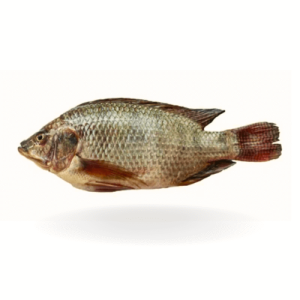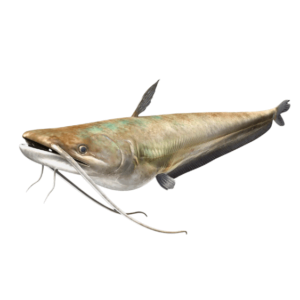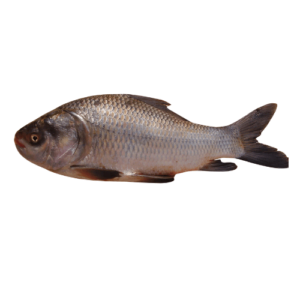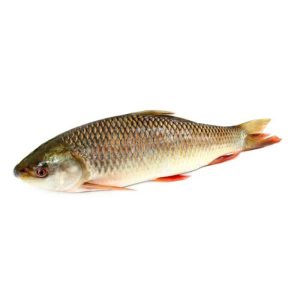Mrigal Carp (Murathi Fish) — Soft, Mild & Perfect for Curry and Everyday Desi Cooking | Fresh Delivery in Karachi
Mrigal Carp, locally known as Murathi Fish, is a popular freshwater fish in Karachi for people who enjoy soft texture and mild, comforting flavors. It’s especially loved in traditional home kitchens where fish curry, simple masala, and slow-cooked gravies are part of daily meals.
Murathi has tender, flaky flesh that absorbs spices gently, making it ideal for fish curry, light masala, handi, and tawa cooking. Compared to firmer fish like Singhara or Catla, Mrigal is softer and cooks quicker, which makes it a good option for everyday family meals, especially when you want something light yet filling.
At Anbar Fish Karachi, Mrigal Carp is freshly sourced, hygienically cleaned, and delivered chilled across Karachi, so you get clean, ready-to-cook fish without visiting the market.
Similar Fish You May Like
If you enjoy Mrigal Carp (Murathi), you may also like:
Catla (Thaila Fish) – Thicker cuts for gravy
Tilapia (Daiyya Fish) – Mild everyday fish
Cat Fish (Singhara) – Meaty alternative for masala
Flavor Profile
Mrigal Carp (Murathi) has a mild, slightly sweet taste with soft, flaky meat. It takes on marinades well and blends beautifully with traditional masalas, garlic, turmeric, and green chili, making it a top choice for spicy fish curries and shallow fries.
Nomenclature
- English Name: Mrigal Carp
- Local Name: Murathi
- Scientific Name: Cirrhinus mrigala
Habitat
Mrigal Carp (Murathi) is a freshwater bottom-dwelling species, typically farmed in ponds, lakes, and slow rivers. In Pakistan, it is raised alongside Catla and Rohu in composite fish farms, particularly across Punjab and interior Sindh, making it available year-round.
Catching Method
Mrigal Carp (Murathi) is exclusively farmed and harvested through controlled aquaculture systems. Once mature, fish are collected, iced, and sent to urban retail markets, where they’re cleaned and cut according to customer needs.
Physical Attributes
Mrigal carp fish have an elongated body with large scales. Their coloration varies from silver to olive-green, with a white belly. They possess a dorsal fin with strong spines and a slightly protruding mouth. Their appearance varies with age and environment, adaptinll to diverse aquatic habitats.
Size
The size range of Mrigal carp can vary depending on factors such as age, habitat, and farming conditions. Generally, they can weigh anywhere from a few hundred grams to several kilograms. In aquaculture, Mrigal carp can grow to sizes of 1 to 3 kilograms or even larger, depending on the farming practices. In the wild, they can also reach larger sizes, with some individuals reaching over 5 kilograms.
Cutting Preferences
In Pakistan, Mrigal carp is commonly prepared by cutting it into gutted, fillets and steaks. Fillets are boneless portions that are suitable for various cooking techniques, while steaks are cross-sectional cuts that include the bone. Both fillets and steaks offer versatile options for grilling, frying, or currying, aligning with local culinary preferences and practices.
Approx. Cutting Yields
- – Whole: 100% yield
- – Gutted: 80% yield
- – Headless and Gutted: 60% yield
- – Slices: 55% yield
- – Boneless: 40% yield
Note: Although the Mrigal Carp (Murathi) can be offered as boneless, it may still contain small bones within the meat. These internal bones are difficult to remove entirely during processing.
Why Murathi (Mrigal Carp) Is a Household Favorite
- Mild, clean taste (not strong or fishy)
- Soft, tender flesh
- Excellent for curry and gravy dishes
- Cooks quickly and evenly
- Budget-friendly freshwater fish
- Suitable for all age groups
- Fresh, hygienically prepared in Karachi
Health Benefits of Mrigal Carp
- Good source of lean protein
- Naturally low in fat
- Contains Omega-3 fatty acids
- Supports heart and brain health
- Easy to digest and light on the stomach
Best Ways to Cook Murathi Fish
Murathi Fish Curry – Classic desi comfort food
Light Masala Murathi – Soft, flavorful pieces
Fish Handi – Slow-cooked, aromatic gravy
Tawa Masala Fish – Quick and simple
Home-Style Fried Fish – Gentle shallow fry
Cooking Tip: Murathi is a soft fish, cook on medium to low heat and avoid over-stirring to keep the pieces intact.
Murathi Fish – FAQ
| Question | Answer |
|---|---|
| Is Murathi fish mild in taste? | Yes, very mild and balanced. |
| Is it good for curry? | Yes, one of the best freshwater curry fish. |
| Does it break while cooking? | Soft fish—cook gently. |
| Is it suitable for daily meals? | Yes, ideal for everyday cooking. |
| Is it fresh in Karachi? | Yes, delivered chilled same day. |







There are no reviews yet.